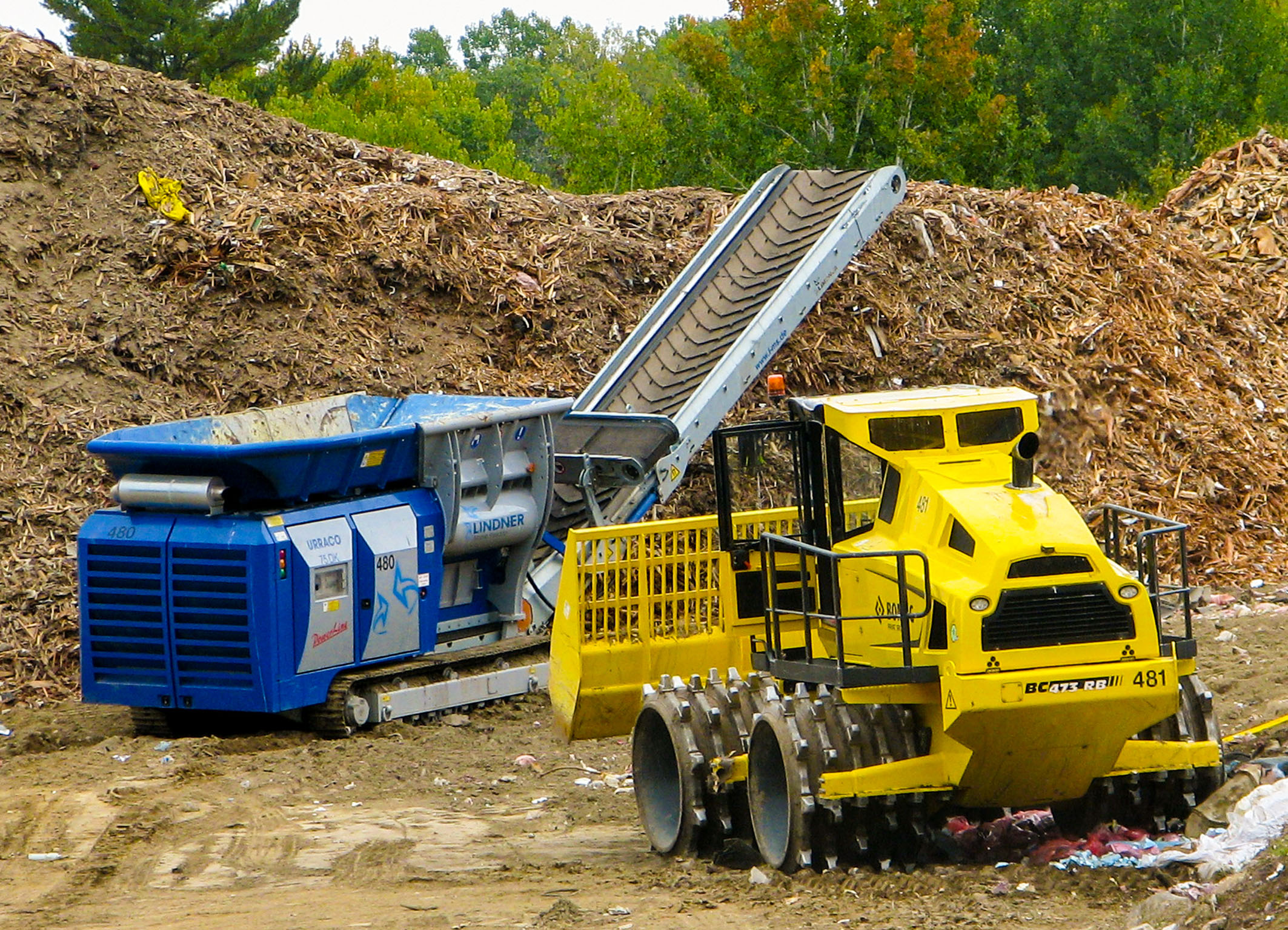On the landfill for non-contaminated waste, which is operated by the company’s Decommissioning & Waste Management division, the shredder is in permanent use crushing wood, plastics and light materials from demolition, renovation and new building work. On the 40 km² site with around 160 buildings, this debris occurs primarily in the form of pallets, construction timber, trees and brush, asphalt, metal containers, plastic pipes and furniture.
Apart from significantly reducing the volume of the waste, the Urraco also assumes the task of preparing the wood fraction into an easily compactible bulk product that can be mixed with regular daily cover material and spread over the working face of the landfill at the end of every working day. In this way, the company complies with the regulation to cover the waste collected during the course of a day with a 150 mm thick layer of wood and soil mixture, thus mitigating the need to bring in earth especially for this purpose.
The Urraco is a highly versatile, slow-running two-shaft shredder for the pre-crushing of untreated material, also containing contaminants. CNL operates the 75 DK with diesel engine and track system and with a nominal shredding capacity of up to 45 t of wood per hour. James Betts, who is Section Head Waste Management Operations and responsible for all activities in the field of non-radioactive waste disposal at CNL, explains: “Even now, we are shredding a volume of over 10,000 m³ every year, but this is likely to multiply quickly as we expand our work. The mobile self-driving Urraco meets our requirements down to a tee. Its shredding performance gives us the necessary reserves, its track system provides the necessary mobility and its rugged construction means a minimum of maintenance and repair work.”
Because the resultant shredded material must be relatively coarse, CNL had the shredder equipped with the particularly robust HW tool shafts for final particle sizes of 200 to 500 mm. As standard, the Urraco is equipped with a contaminant recognition system, which responds within fractions of a second. Together with the reversing function, it protects the tools from damage and significantly reduces the wear and tear of the shafts and the stress on the drive system. Also part of the standard equipment is the discharge belt, the height of which can be steplessly adjusted by remote control through the hydraulic system. With CNL, a magnet is positioned above it, which extracts nails and other similar metal components for subsequent recycling.
Betts gives his initial summing-up: “The track system reliably prevents the machine from becoming stuck when we maneuver it with the remote control over the rough terrain. The diesel is very well coordinated to the hydraulic system, which means that it consumes surprisingly little fuel when shredding. In addition, the control software switches it to eco mode with a much lower rpm if no shredding is carried out for a longer period of time. This reduces consumption even further. Especially for our region, where the temperatures vary from over 30 °C in summer to below -30 °C in winter, it was also vital that this engine should be completely immune to the influences of the weather in practical operation. Our experience so far with the performance, reliability, operating costs and maintenance friendliness of the Urraco confirms our decision to select Lindner as our supplier without reservations.”










